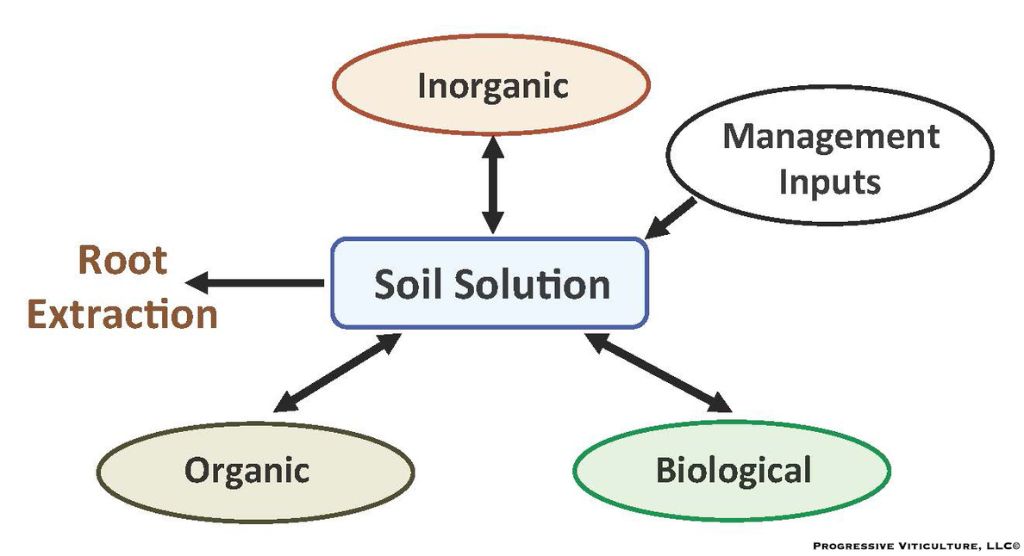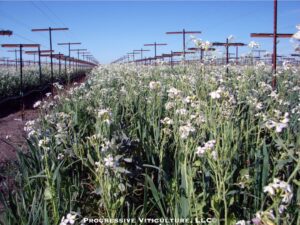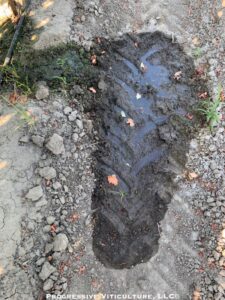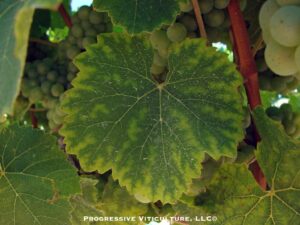 External pressures on mineral nutrient use in vineyards come from several directions. On the one hand, to remain competitive, we need to contain applied mineral nutrient costs even while costs of some fertilizers are being driven upward by the growing global fertilizer demand. On the other, our society increasingly expects applied mineral nutrient resources to either stay in vineyards or to leave only with the harvested fruit. These pressures, originating from disparate sources, converge on mineral nutrient use efficiency.
External pressures on mineral nutrient use in vineyards come from several directions. On the one hand, to remain competitive, we need to contain applied mineral nutrient costs even while costs of some fertilizers are being driven upward by the growing global fertilizer demand. On the other, our society increasingly expects applied mineral nutrient resources to either stay in vineyards or to leave only with the harvested fruit. These pressures, originating from disparate sources, converge on mineral nutrient use efficiency.
________________________________________
This article is a reproduction of the Mid Valley Agricultural Services Viticulture Newsletter, April 2015.
________________________________________________________________________________
Three primary groups of factors influence mineral nutrient efficiency. They are technological, environmental, and grapevine factors. Recently, the technological aspects of applied nutrients have been a common topic in the agricultural press and at agricultural gatherings, often using the construct of the 4 R’s. That is utilizing the right nutrient source, at the right rate and right timing, and applying it in the right place easily accessible to crop plants. Fortunately, many wine grape growers are technologically competent, having a wide range of nutrient formulations, effective delivery systems, and a basic understanding of soils and vine nutrient demand to which fertilizer applications can be synchronized. Optimum mineral nutrient efficiency, however, broadly encompasses other factors.

Figure 1. Mineral nutrient pools affecting the nutrient content of the soil solution.
Source: Progressive Viticulture, LLC ©
The soil solution lies at the center of vineyard mineral nutrient action. It is the water and dissolved substances that reside in soil pores. Among these substances are plant mineral nutrients. Grapevines, in fact, acquire nearly all of their mineral nutrients from the soil solution.
Mineral nutrient concentrations within the soil solution are in a constant state of flux due to a number of factors. First, water additions dilute them while water losses concentrate them. Second, weathering of soil minerals and decomposition of organic matter slowly add mineral nutrients to the soil solution while plants and microorganisms consume them (fig 1). Also, depending on texture and the general chemical environment (pH), a large portion of dissolved mineral nutrients may be removed from solution before vines have an opportunity to take them up. These losses are mainly due to precipitation, adsorption, and fixation reactions. After heavy rainfall, water percolating below the root zone carries dissolved mineral nutrients away. Last, but not least, our irrigations, fertilizations, and amendment applications have significant influences that overlay the natural processes listed above.
Given this complex background, what can we do to optimize use efficiency of mineral nutrients present in our vineyard soils? Begin with actions that promote soil solution flow. Actually, this task requires little effort early in the season when soils fully wet from winter rains and vine roots are actively growing. Later, it depends on irrigation schedules that maintain fairly continuous, moderate moisture in the soil under drip emitters. As soils dry and water flow within soil pores decreases, mineral nutrient movement becomes increasingly confined to random motion within the thin films of water adhering to soil particles (i.e. diffusion). Under these conditions, fertilization efficiency is generally low and to compensate, higher application rates may be needed to elicit vine responses. The impact of soil moisture content on vine nutrition is an important reason to maintain vines on the wetter side of moderate water stress (-10 to -13 bars) while practicing regulated deficit irrigation (RDI).

Figure 3. Cover crop awaiting incorporation into vineyard soil.
Source: Progressive Viticulture, LLC ©
Soil solution movement, however, is not solely a function of water content. It also depends on soil permeability to water, which is largely a function of soil porosity. The porosity of vineyard soils is often suboptimal due to compaction and cation imbalances (fig 2). The former compresses soil pores and the latter disarranges them due to soil particle dispersion. To alleviate compaction, shatter and loosen the soil with chisels or rippers and to promote soil aggregation, add organic amendments and calcium as gypsum. Cover crop roots can stabilize soil porosity improvements achieved through deep cultivation, organic matter, and gypsum, and can further enhance them.
In addition to advancing soil solution flow towards roots, we can encourage the extension of vine roots into greater volumes of soil and towards the solution therein. Improving soil permeability, as described above, assists in this effort. Supporting spring and post-harvest flushes of root growth are also crucial. The application of fertilizers containing ammonium-nitrogen, organic acids, and ample phosphorus can be particularly beneficial in this effort. It is also essential to control soil-borne pests and diseases that damage and diminish root systems.
Other measures taken to improve the root zone environment can enhance mineral nutrient efficiency. These include soil amending to ensure a pH between 5.5 and 7.0, which limits many reactions that remove nutrients from the soil solution. Cover crops can increase soil humus and correspondingly, cation exchange capacity, which buffers the nutrient content of the soil solution (fig 3). Such humus additions also stimulate soil microbes, whose products accelerate the weathering of soil minerals and the release of the nutrients they contain into the soil solution.
Finally, optimum mineral nutrient use depends on a balanced supply of all mineral nutrients. For example, grapevines may suffer nitrogen deficiency even though ample nitrogen is present in the soil if vines are suffering either boron or manganese deficiency (fig. 4).
To summarize, mineral nutrient efficiency may be less than optimal if we fail to look beyond fertilizers and the way they are applied. We will be more consistently successful if we think broadly about mineral nutrients in the context of comprehensive soil and water management.
Further Reading
- Burt, C, O’Connor, K, and Ruehr, T. Fertigation. Irrigation Training and Research Center, Calif. Poly. State Univ., San Luis Obispo, CA. (1998).
- Grant, S. Balanced soil fertility management in vineyards. Practical Winery and Vineyard. May/Jun (2002).
- Grant, S. Fertilizer efficiency for wine grape vineyards. Practical Winery and Vineyard 28. March/April (2006).
- Marschner, H. Mineral nutrition of higher plants. 2nd Ed. Academic Press, London. (1995).
- Miller , R. J., D. E. Rolston, R. S. Rauschkolb, and D. W. Wolfe. Drip application of nitrogen is efficient. Calif. Agric. 30, 16-18. (1976).
- The Fertilizer Institute. What are the 4 R’s? (Last accessed 21Sep15).
- Tisdale, SL, Nelson, WL, and Beaton, JD. Soil fertility and fertilizers. 4th Ed. Macmillan Publishing Company, New York. (1985).



